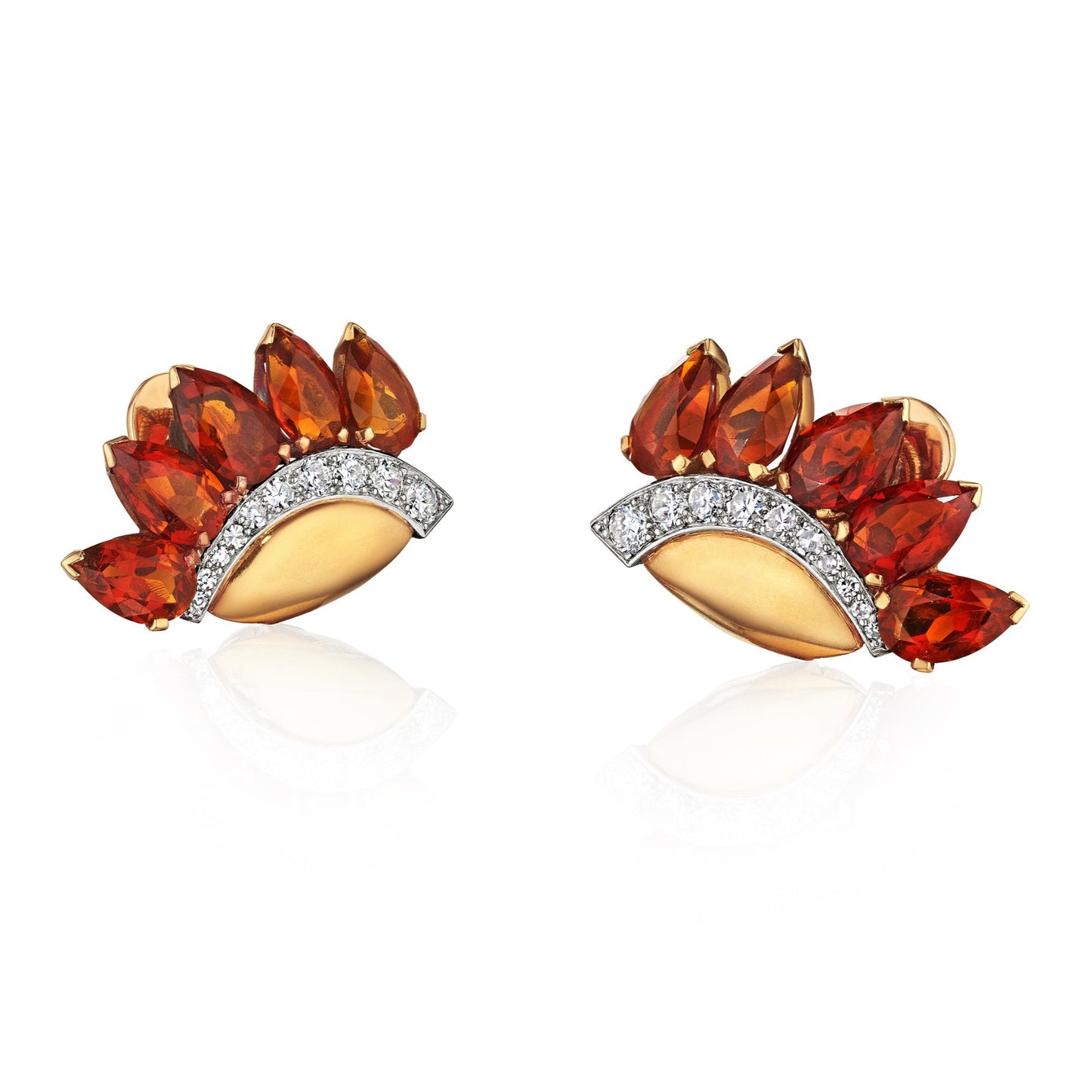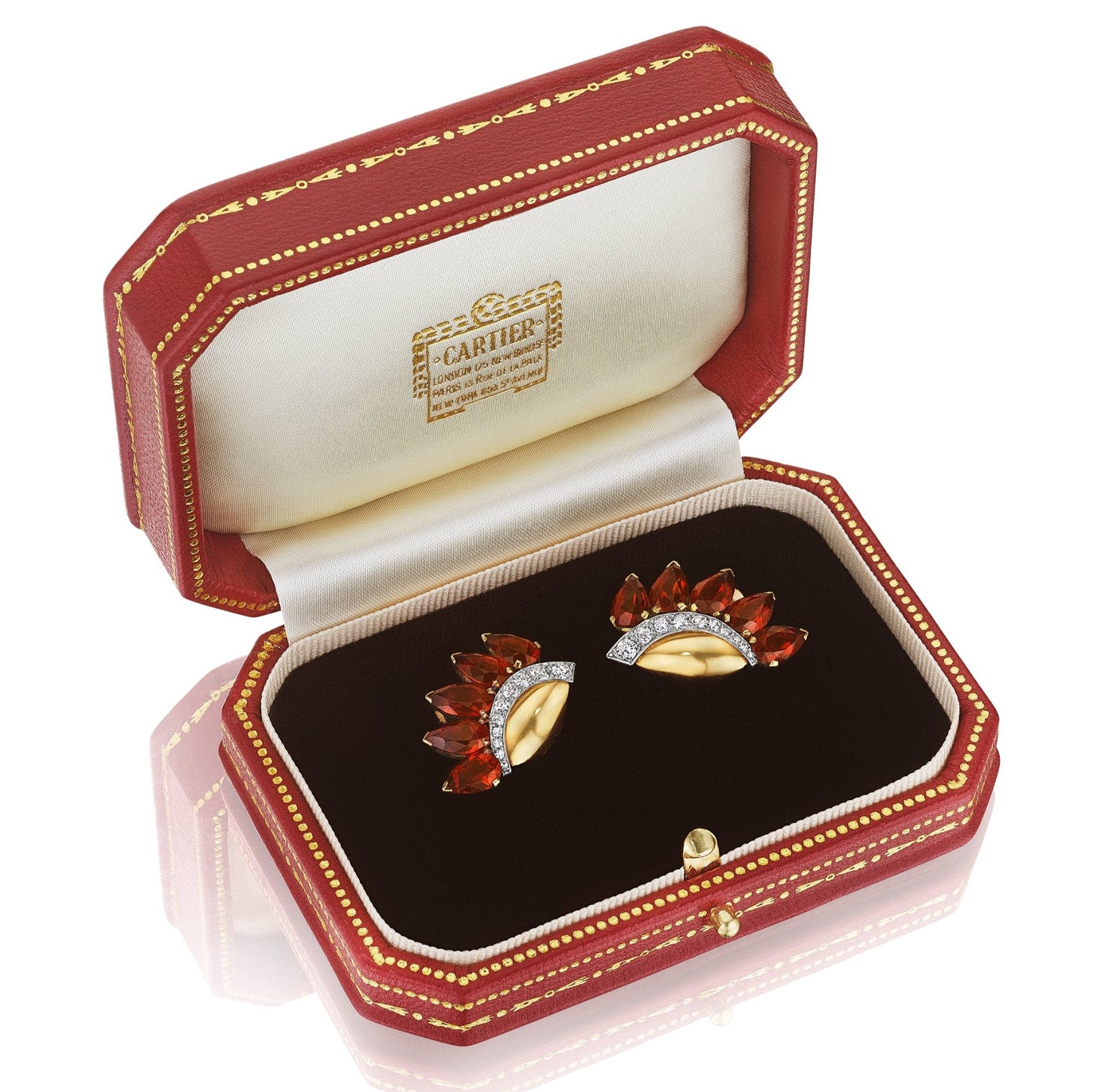Art Moderne Diamond and Citrine Earrings by Cartier, London, circa 1935
Art Moderne Diamond and Citrine Earrings by Cartier, London, circa 1935
A pair of earrings, each composed of five pear-shaped citrines accented by a graduated line of diamonds set in platinum above a polished gold segment; mounted in 18-karat yellow gold and platinum
- 10 pear-shaped citrines
- Old-mine diamonds, total weighing approximately .60 carat
- Signed Cartier London
- Each: 1 x 5/8 inch
Additional cataloguing
Biography
Cartier was founded in Paris in 1847 by Louis-François Cartier. His three grandsons, Louis, Pierre, and Jacques built the house into a famous international jewelry empire serving royalty, Hollywood stars, and socialites. Cartier has created some of the most important jewelry and objects of art of the twentieth century with many iconic designs such as mystery clocks, Tutti Frutti jewelry and the Panthère line. In 1983, The Cartier Collection was established with the objective of acquiring important pieces that trace the firm’s artistic evolution. Today, Cartier has 200 stores in 125 countries.
Significance
In the 1930s there were bold changes in jewelry design as the world on the brink of World War II grappled with huge social changes. Established gem sources in Europe, India, and the East were cut off and platinum became scarce. It was eventually declared a strategic material, off-limits for civilian uses. Jewelers around the world turned to gold as the primary metal of fine jewelry and looked for alternate gem sources in South America. Despite the limitations, Cartier continued to create inspired pieces, such as these unusual earrings composed of yellow gold, deeply colored citrines from Brazil, and a touch of platinum and diamonds, all the rarer during this period.
While Cartier London established their own workshops in 1921, throughout the 1920s jewelry was freely transferred between London and Paris. In 1929, that stopped because of two events, first, the Chancellor of the Exchequer established a duty on jewelry and second, brothers Jacques Cartier (London) and Louis Cartier (Paris) had a personal disagreement and Louis refused to send jewelry from Paris, providing only photos. Suddenly, Cartier London had the chance to find their own design style and they became particularly know for wonderful aquamarines and citrines. In 1937, Cartier London created an inventive citrine and diamond tiara for the coronation of George VI, like these earrings, the tiara is distinctly of the era.
Cartier created a superb jewel in this pair of earrings, identifying artistic opportunity in the tawny shades and chunky shapes of the citrines and strategically accenting them with diamonds and platinum over a base of polished gold. On the eve of World War II and amid the Great Depression, Cartier built a confident new style of cocktail jewelry that would last into the 1950s. The bold scale and sunny palette of these earrings are as appealing and wearable now as when they were made.





